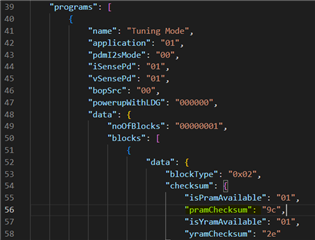Other Parts Discussed in Thread: TAS2563
Hi, TAS2781 support team
When TAS2781 is used in the real system, I need the binary file(*.bin) of all resister. But the binary file can not be generated using PPC3 GUI Tool. But it looks like to be able to program the binary file using Binary Version in Menu.
How to generate the binary file after configuring all register in PPC GUI Tool?
Thanks
Tamio


